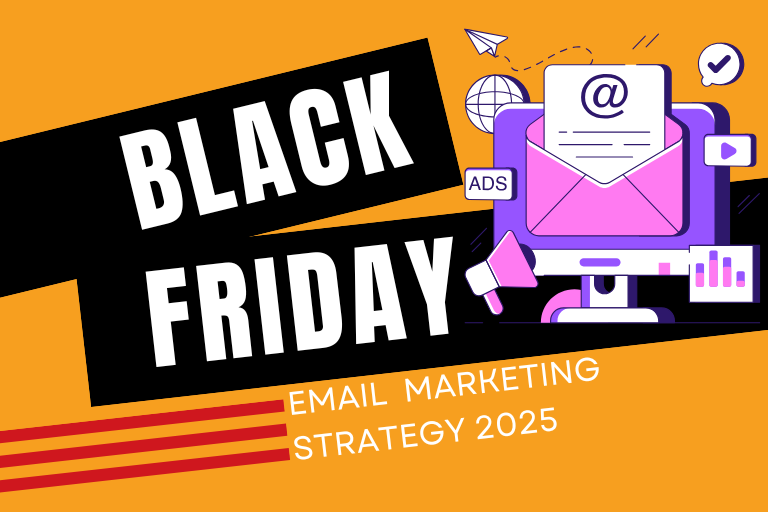Imagine having a virtual assistant that knows exactly when to send the perfect email to your customers and boost your sales while you focus on other parts of your business. Well, that’s very achievable if you create email flows for your type of business.
In fact, research has shown that businesses that automate their email campaigns see an average 15.2% higher open rate and 3.7% higher click through rate than those that don’t. That’s a big number right there.
Seeing how important email flows are for businesses we decided to put together this guide on how to create email flows that will take your business to the next level.
Steps on How to Create Email Flows
Creating email flows is not that complicated. Just follow the steps below and watch your flow take your business to the next level:
Having a clear goal of what you want your email flow to do is very important. In fact, you are supposed to have figured that out already before thinking about setting up an email flow. Figuring out your goal will help you through the entire process (from choosing to designing the emails).
If you are trying to make sales, then your goal should be to create a flow that prompts people to complete their purchases. And, if you want to increase engagement, your flow should be designed to send helpful content that keeps your audience interested.
Whatever your goal is, write it down. This helps you measure success later and ensures every email in your flow has a purpose.
2. Pick the Right Email Automation Platform
After you have clearly defined what you want, the next thing to do is to choose the right tool for the flow. Popular platforms like Klaviyo, Yotpo and Omnisend offer great features, but you need to pick one that matches your specific needs.
For example, if you run an e-commerce store, Klaviyo might be perfect because it integrates well with online shops. But if you’re just starting out and want something simple, Mailchimp could be a great choice.
Also, you need to look for features like easy-to-use templates, segmentation options, and good reporting tools to help you structure your flows better. Don’t forget to consider your budget too.
Triggers are what kick off your email flow. Think of them as the starting point. They are events or actions that tell your email platform, “Hey, it’s time to send an email”
For example, when someone signs up for your newsletter, that action triggers a welcome email. If they add an item to their cart but don’t check out, you can trigger a cart abandonment email reminding them to complete their purchase.
Common triggers include things like making a purchase, signing up for something, or not engaging with your emails for a while. Identifying the right triggers helps you send timely, relevant emails that feel personal and helpful to your audience.
Not all customers are the same, right? Some might be new, others might be returning, and the rest could be super loyal. So, you need to group your customers into the right group based on their behavior and character.
The reason you need to do this is because most people respond better to emails if they feel like the email is meant specifically for them. For instance, if a customer is buying from your store for the first time, he/she will easily react to a discount message.
However, loyal customers will appreciate it if you update them early on new products. Furthermore, segmenting can be done based on location, purchase history, or engagement level.
Fortunately, most email platforms make it easy to set up these segments. So, do well to send emails that match each group’s interests. With this, you’re more likely to get clicks, responses, and sales.
5. Design Your Email Templates
Now it’s time to get creative and make emails that look good and get your messages across to the right people. An email template doesn’t have to be complicated. Just keep it simple. Keeping it simple and clean helps your reader focus on the message and not the design.
Use your brand colors, logo, and fonts to make it look cohesive.Also, make sure your call-to-action (CTA) pops. A CTA is a button or link that tells your reader what to do next, like “Shop Now” or “Learn More.”
Remember many people check their emails on their phones so your template should be mobile-friendly. Try testing it out on different devices before you send it.
Personalizing your content gives your customers this feeling of importance. Let’s be real, we all don’t like getting messages that feel like they were forwarded to millions of people. Personalization will always make a huge difference.
It is all about making your emails feel like they were written just for the person receiving them. Incorporate simple things like including customers’ names in the greeting (e.g., “Hi, Sarah!”) or as advanced as recommending products based on their browsing history.
Most email platforms let you use dynamic tags to pull in details like names, recent purchases, or even birthdays. When people see emails that speak directly to them, they’re more likely to open, read, and take action.
This is where you arrange the order and timing of your emails. An email sequence is just the order of your emails and the time gaps between them. Let’s say someone signs up for your newsletter, you can send them a welcome email straight away, then a “testimonail” email 2 days later, and a special offer 1 week later.
Knowing how to time your messages is very important. Too many emails can annoy people, but long ones make your customers forget about you.
A common practice is to space emails 2-3 days apart. You can test different timings to see what works for your audience.
Before you hit the launch button, take some time to test your flow. Testing is a must, because even a small mistake can affect how well your emails perform.
Start by sending test emails to yourself and your team. Check for broken links, typos, and formatting issues. Make sure the emails look good on both desktop and mobile. Once everything looks good, you can do A/B testing.
This means sending two different versions of an email (maybe with different subject lines or designs) to see which one gets better results. When everything looks good, hit Publish and let your email flow do the work for you.
Best Tools for Creating Email Marketing Flows
There are tons of email automation tools you can pick from. Some of them have features that are lacking in others.
But before you subscribe to any of them, make sure it has features that suit the kind of email flows you want to create. Below are some of the most popular tools for building email flows:
Klaviyo is designed specifically for eCommerce businesses. This tool is excellent for creating email marketing flows for online stores. It provides great segmentation and messages are triggered based on customer behavior and purchase history.
One of the major advantages of Klaviyo is its ability to connect your email lists with external data (like data from Meta campaigns). This enables you to construct email automation workflows that are well-detailed.
Mailchimp has become a popular tool for building email workflows because of its intuitive interface and robust features. This tool is very ideal for simple designs and companies that don’t need lots of features from an email automation tool.
It offers customizable templates, automation workflows, and advanced segmentation features that help you target the right audience with and send them the right messages.
● Omnisend
Omnisend is an email marketing tool that has been tailored to meet the needs of ecommerce enterprises. It features virtual gift boxes and interactive scratch cards which set it apart from its competitors.
Also, it adds extra customer engagement features. Interestingly, it has the ability to integrate with Google and Facebook ads, which helps in creating a uniform marketing strategy.
● ConvertKit
If you’re a creator, like a blogger, YouTuber, or an online coach, ConvertKit is the little helper for your email tasks. It’s super easy to use, and you can make custom landing pages, organize your email lists, and send automatic emails to your audience.
The free version is great if you just need to send simple newsletters. However, if you decide to upgrade, you can unlock more features.
Conclusion
The best thing about creating email flows is you don’t have to be an expert in internet marketing. You just need to figure out the right tool that suits your brand needs. And what better way to know these tools than booking a demo with us?
We’ll let you in on everything you need to know about how to create unique email flows for your company. Ready to take your ecommerce email marketing strategy to the next level? Let’s hear from you.



